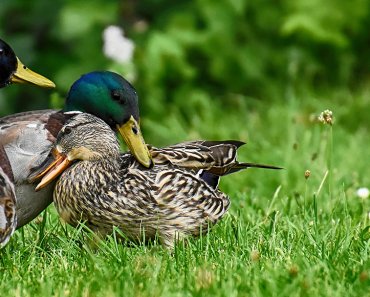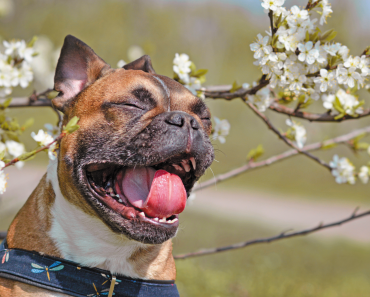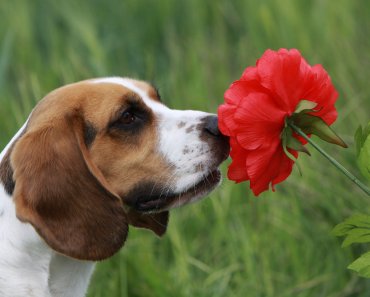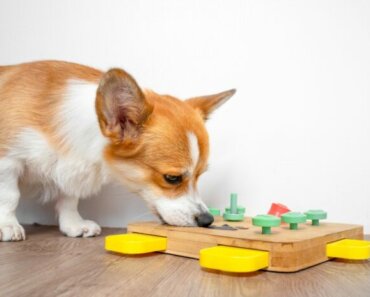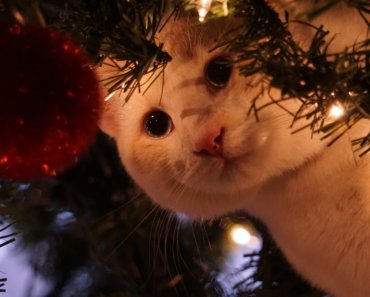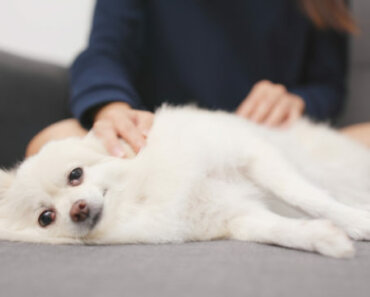Eye care should be a regular part of your dog or cat’s wellness regimen. Know the red flags to watch out for, and what you can do to help preserve eye health and vision.
If you’re like a lot of animal parents, you might doubt your dog or cat would ever encounter an eye problem, much less need to see a veterinary ophthalmologist. But eye issues are more common than you think, so it is important not to overlook your dog or cat’s eye and vision health. This article presents some helpful hints that can help you keep their eyes healthy and safe.
1. DO THE EYES HAVE ANY DISCHARGE?
Look at your dog or cat’s eyes on a daily basis. There should not be any build-up of discharge that requires regular cleaning.
In dogs, discharge can have many causes
- Tear film deficiency, called dry eye disease, can affect the amount (quantitative) or quality (qualitative) of the tears. Allergies will sometimes contribute to dry eye disease. Discharge can range from chronic wetness on the hair/fur around the eyes, to ropy clear or yellow discharge. The animal may also be squinting, which is a sign of pain. Dry eye disease requires lifelong, daily medication(s) to improve tear deficiency and quality. If allergies are involved, they will need to be treated as well.
- An anatomical abnormality called entropion, or a rolling in of the eyelid(s), means the hairs/fur will touch the cornea and cause pain. This can also result in wetness around the eye(s), ropy clear or yellow discharge, and squinting. Entropion usually requires surgery if it is causing constant irritation or pain, since it can lead to vision-threatening corneal ulcers.
- Extra eyelashes on the margin of the eyelids, called distichiasis, can cause excessive wetness. If the lashes are many and/or firm, squinting may be evident as well. These extra eyelashes are best addressed with surgery.
Tip: Extra eyelashes can also occur on the inside of the eyelids — these are called ectopic cilia, are usually very painful, and can cause squinting, excessive discharge, or mucoid build-up.
- A blocked nasolacrimal puncta that cannot drain tears properly and may become irritated or inflamed is another cause of excessive wetness and discharge. A procedure to unblock the nasolacrimal puncta can often help clear the blockage.

In cats, discharge is often due to FHV
Excessive tearing in cats can be due to an underlying feline herpesvirus-1 (FHV) infection, though other bacterial or viral infections can occur alone or concurrently with FHV. Conjunctivitis is not uncommon in kittens and cats, as they may acquire the disease early in life from their mothers or other cats in the environment. If squinting persists, see your veterinarian or a veterinary ophthalmologist to alleviate pain and avoid a worsening of the problem.
Most of the time, the kitty’s immune system will fight FHV, and they will recover with minimal issues. In other cases, however, the virus can cause upper respiratory signs, conjunctivitis, and sometimes corneal ulcers that can progress to blindness or loss of the eye(s). FHV can lie dormant for a long time and become re-activated if the cat is stressed.
To address FHV, your veterinarian or veterinary ophthalmologist may prescribe an oral or topical antiviral, possibly along with antibiotics and pain control.
Tip: Supplements that include a combination of docosanol (a natural antiviral) and L-lysine are often helpful for controlling mild or chronic infections, and can be used daily.
2. DO YOUR DOG OR CAT’S EYES LOOK THE SAME?
Watch for any differences between your animal’s left and right eyes, especially changes that occur quickly (i.e. within hours to a few days). If your dog or cat is bright-eyed and normal one day, then is suddenly squinting or experiencing discharge from one (or both) eyes the next, see your veterinarian or ophthalmologist immediately to diminish the risk of progression and the possible development of severe vision- threatening issues.
Tip: Veterinary attention is also necessary if you notice redness in one or both eyes, or if the pupils are different sizes.
3. IS HE EXPERIENCING VISION LOSS?
Changes in how your animal sees can sometimes be very difficult to identify. Dogs and cats are very good at adapting to diminished sight, so they can fool even the most astute animal parent. Clinical signs of diminished sight include:
- Walking cautiously around the house, especially when it is dark or lights are dim.
- Bumping into objects, especially if you rearrange the furniture or move to a new home.
- Not wanting to go up or down stairs, when it previously was not an issue.
- Not wanting to jump on or off the bed.
- Falling into the pool or off the deck when this was never a problem before.
Serious causes of diminished or lost vision that would benefit from seeing a veterinary ophthalmologist include:
- Opaque or cloudy corneas due to chronic dry eye disease, previous corneal ulceration, inflammation inside the eye(s) called uveitis, or high intraocular pressure called glaucoma
Tip: Corneas are the windshields of the eyes, so keeping them clear is important for sight.
- Cataracts are lens opacities and may not be obvious in the early stages. The most common causes of cataracts in dogs include inherited/genetic conditions, diabetes mellitus, inherited retinal degeneration aka Progressive Retinal Atrophy (PRA), and aging. In cats, chronic inflammation is the most common cause of cataracts, although inherited cataracts are possible as well.
- Retinal degeneration in young to middle-aged dogs is most commonly due to PRA. Other causes include Sudden Acquired Retinal Degeneration Syndrome (SARDS), age-related retinal degeneration (over nine to ten years of age), and less commonly, immune-mediated retinopathy.
- Glaucoma is a blinding and painful disease that is either primary (aka inherited/genetic) or secondary, or due to other issues such as chronic inflammation related to infections or cataracts, lens instability/luxation, retinal detachment, hemorrhage inside the eye, or trauma. In cases of glaucoma, the eye may become permanently blind within three to four days.
TAKING CARE OF YOUR ANIMAL’S EYES
Do a daily evaluation of your dog or cat’s eyes and look for any changes, such as squinting or holding the eye(s) closed, tearing, redness, excessive or unusual ocular discharge, and rubbing or pawing at the eye(s).
Hint: Pain may indicate serious problems, including dry eye disease, corneal ulcers, uveitis (primary or secondary inflammation inside the eye), or glaucoma.
These diseases may benefit from antioxidant and anti-inflammatory nutritional support in addition to conventional medicine.
The best way to care for your dog or cat’s eye health is to be proactive and seek veterinary help as soon as you notice any issues. A yearly wellness visit to a veterinary ophthalmologist can detect diseases early in their course. At home, keeping your animal at a healthy weight and on a quality diet, as well as supplementing with antioxidants, will go a long way toward ensuring her eyes stay bright and healthy all her life!




